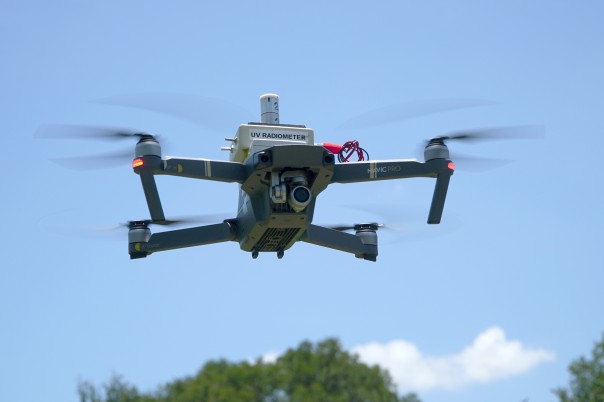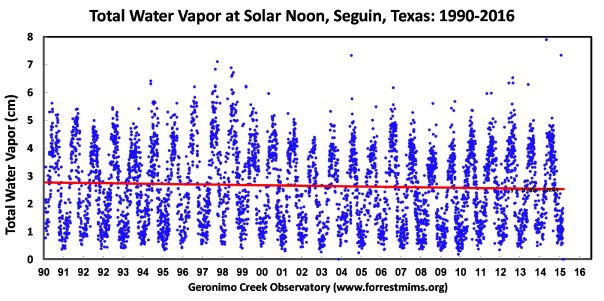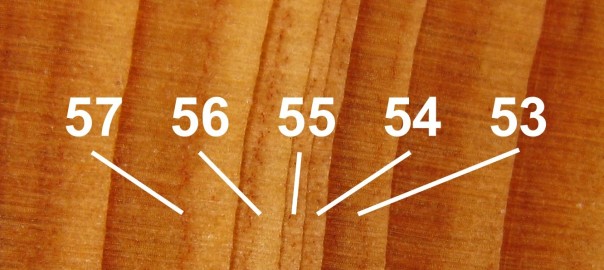Since I began making solar UV-B measurements in the 1.5-acre field we call the Geronimo Creek Observatory in May 1988, the trees around the field have grown much taller. This can be seen in near daily fisheye photos of the zenith sky made since December 2000. On a typical clear day, around half the UV-B arrives directly from the sun and the remainder is scattered from the sky. So those growing trees have definitely reduced the full-sky UV-B measurements at my site, and to find out how much was impossible until the UAV (drone) era.

Shown here is a DJI Mavic Pro with my DIY 1994 UV-B radiometer mounted on top along with a 16-bit data logger. Several July 2017 flights of this radiometer above the trees have shown they are now blocking around 2% of the UV-B, which is much less than I expected.
 The gaps in the data were intentionally caused by placing a black rubber cap over the detector to provide references. The third trace is when the drone was hovering next to the Picture Post, which is where the drone was perched for the first and fourth traces. The radiometer was attached to the Onset data logger with Handi-Tak and the logger was attached to the Mavic’s battery with Velcro. A strip of adhesive tape across the end of the data logger helped guarantee security.
The gaps in the data were intentionally caused by placing a black rubber cap over the detector to provide references. The third trace is when the drone was hovering next to the Picture Post, which is where the drone was perched for the first and fourth traces. The radiometer was attached to the Onset data logger with Handi-Tak and the logger was attached to the Mavic’s battery with Velcro. A strip of adhesive tape across the end of the data logger helped guarantee security.
Flying this radiometer was risky, for I made in 1995 and used it extensively during two NASA-sponsored campaigns in central Brazil to study the thick smoke during the burning season, which on some days blocked 100% of the UV-B. Fortunately, the Mavic lifted the 7.5 ounce payload with no problem other than reduced battery life. I’ve also flown the radiometer from the ground up to and just above small openings in the tree canopy on our place to learn much more about the distribution of UV-B within the canopy. This is of interest, for UV-B is an effective suppressor of non-pigmented microbes, some of which are pathogenic.



